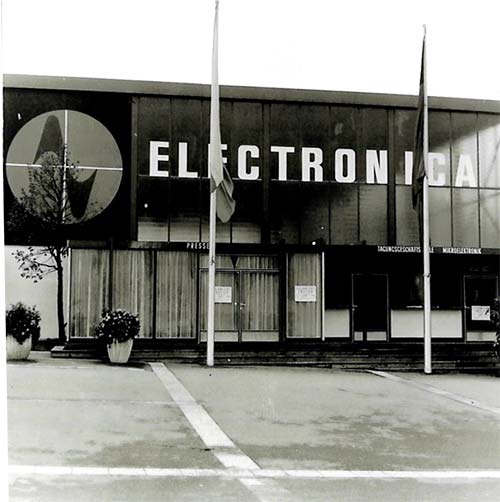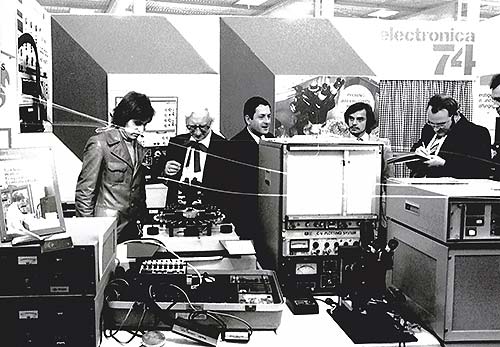 electronica celebrated its premiere in 1964 as the first trade fair in Germany devoted solely to electronic components. In the meantime, it has been accompanying innovations in the international electronics industry for six decades, providing a complete market overview of its latest products, technologies and solutions every two years. In 2024, the world’s leading trade fair for electronics will celebrate its 60th anniversary from November 12 to 15, occupying all 18 exhibition halls for the first time. The focus will be on the future vision of an all electric society.
electronica celebrated its premiere in 1964 as the first trade fair in Germany devoted solely to electronic components. In the meantime, it has been accompanying innovations in the international electronics industry for six decades, providing a complete market overview of its latest products, technologies and solutions every two years. In 2024, the world’s leading trade fair for electronics will celebrate its 60th anniversary from November 12 to 15, occupying all 18 exhibition halls for the first time. The focus will be on the future vision of an all electric society.
“electronica was better than its reputation” was the title of a Munich newspaper’s review of electronica in 1964, a “novelty in the German trade fair industry.” After the U.S., the Federal Republic of Germany was the most important producer of electronic products in the western world at that time, making it virtually predestined to host such a trade fair. Launched at the instigation of international companies, and initially viewed somewhat suspiciously, the first edition in Munich in October 1964 turned out to be a resounding success. 407 companies from 16 countries exhibited, two thirds of them from abroad, especially from the U.S., followed by Great Britain and France. Around 14,000 trade visitors flocked to the old Munich exhibition grounds at the Theresienhöhe on the eight days of the fair, where exhibitors presented innovations from the industry spread over an area of 4,100 square meters. One of the highlights was a model of the Syncom III communications satellite, which was lost for five days after being transported from the U.S. to Munich before being discovered in a corner of Munich Airport just in time for the start of the trade fair.
Stage for technological milestones
After the second edition in 1966, which already attracted almost 800 exhibitors and 22,000 trade visitors, a Munich newspaper spoke of a “spectacular success in the professional world.” “With this year’s event, electronica has established a reputation that will make it difficult even for the major players in this industry to continue to pass it by.” On that basis, electronica experienced steady growth over the following decades and quickly became the most important meeting place for the international electronics industry. Countless innovations such as the microchip were presented to the world for the first time here, and technological milestones shaped the trade fair. They included, for example, the introduction of microprocessors in the 1970s, the development of mobile communication in the 1980s and 1990s, and the rapid advances in digitalization in the 2000s with the spread of wireless Internet.
2024 will be the biggest electronica of all time
Like no other trade fair, electronica has been providing a complete market overview and showcasing the trends of tomorrow for six decades. “electronica has become an indispensable platform for all companies in the electronics industry, from key players to startups,” emphasizes Exhibition Director Katja Stolle. “The current booking status proves that once again, as 2024 will be the first time we fill all 18 exhibition halls, together with SEMICON Europa in two halls,” adds Caroline Pannier, Deputy Exhibition Director. “That shows that electronica is more important than ever for tackling the challenges facing society at a time when electronics is shaping our everyday lives more than ever.”




